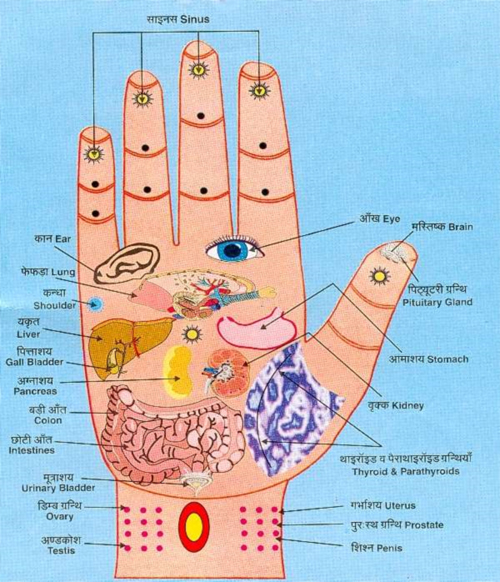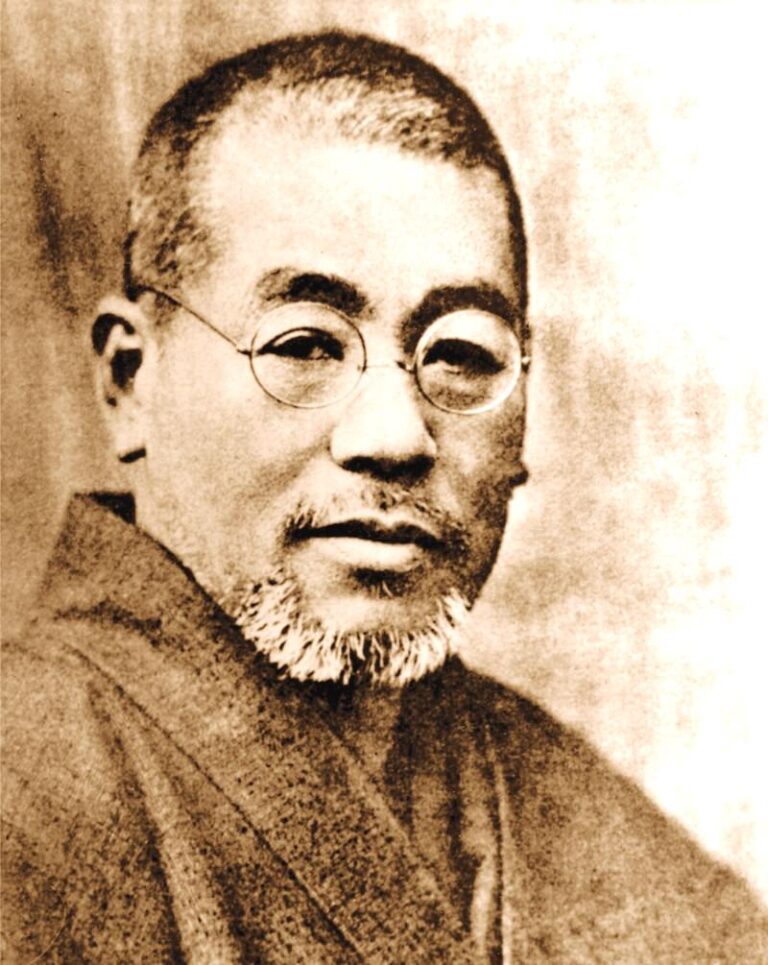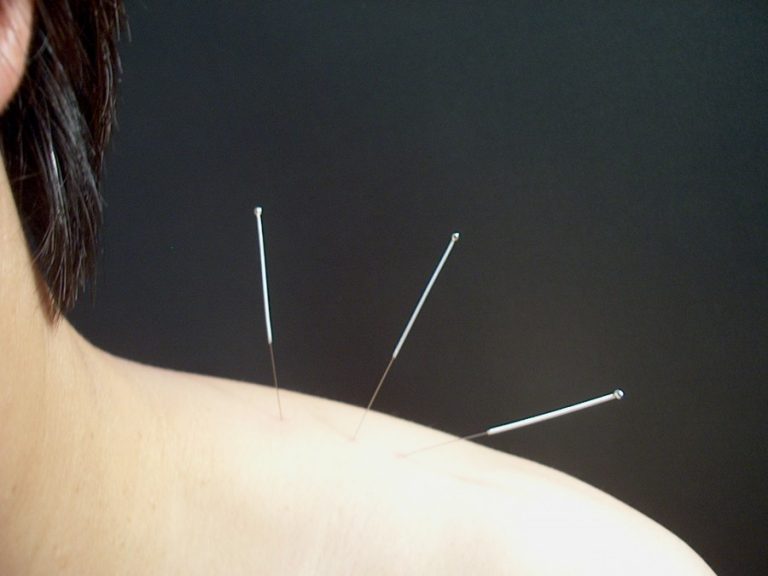The Power of Energy Healing: Debunking Myths and Unveiling Benefits
Introduction
Energy healing, a practice with roots in ancient cultures worldwide, has been gaining popularity in the United States as a complementary approach to health and wellness. Proponents of energy healing claim various health benefits, including pain relief, reduced depression and anxiety symptoms, and an overall sense of well-being. In this article, we will explore the concept of energy healing, the different types it encompasses, and whether scientific research supports its purported advantages. If you’re curious about energy healing and considering giving it a try, read on to discover more about this fascinating field.
Understanding Energy Healing: Definition and Approach
Energy healing operates on the belief that our bodies have an energy flow, and by balancing this flow, we can promote healing and well-being. According to the National Cancer Institute (NCI), energy healing is a complementary approach that seeks to restore energy balance in the body.
The National Center for Complementary and Integrative Health (NCCIH) describes energy healing therapy as a technique where a practitioner channels healing energy to the client’s body, often through their hands or other mediums like acupuncture needles. This energy flow restoration is believed to bring about a range of health benefits. Energy healing can be non-contact or involve physical touch, depending on the specific method used.
The Array of Energy Healing Techniques
Energy healing offers a diverse array of techniques, each with its unique approach. Some popular forms of energy healing include:
- Reiki: An energy healing practice believed to help with pain, depression, anxiety, stress, and overall mood. While there is some scientific evidence supporting its efficacy, more research is required for conclusive results.
- Acupuncture: An ancient Chinese practice that involves stimulating specific points on the body to promote the flow of energy (qi) and restore balance.
- Qigong: A traditional Chinese practice that combines movement, meditation, and breathing exercises to balance and enhance the body’s energy flow.
- Sound Healing: The use of sound frequencies, such as singing bowls or tuning forks, to facilitate healing and relaxation.
- Reflexology: The application of pressure to specific areas on the feet, hands, or ears to promote healing and overall well-being.
- Shamanic Healing: A spiritual practice involving connecting with the spirit world to facilitate healing and restore harmony.
- Crystal Healing: The use of crystals to balance energy and promote healing.
- Touch Therapy: A form of energy healing that involves physical touch to restore energy balance.
- Chakra Balancing: A practice that focuses on balancing the body’s chakras or energy centers to promote well-being.
- Polarity Balancing: A technique aimed at balancing the body’s energy through gentle touch and dialogue.
- Quantum Energy Healing: An approach that draws from quantum physics principles to promote healing at the energy level.
The Healing Power of Reiki: Evidence from Clinical Studies
Introduction
I am quoting this study https://www.ncbi.nlm.nih.gov/pmc/articles/PMC5871310/
Reiki, a popular complementary therapy, has been gaining attention for its potential to provide more than just a placebo effect. This article reviews the available clinical studies of Reiki, examining its effectiveness and safety. The evidence suggests that Reiki may activate the parasympathetic nervous system, leading to healing of the body and mind. This article explores the potential benefits of Reiki in managing chronic health conditions and aiding in postoperative recovery. Let’s delve into the findings of the studies to understand the true healing power of Reiki.


Physiological Responses to Reiki
Several studies have investigated the physiological effects of Reiki, comparing it to placebo treatments. Reiki has shown promising results in inducing physical relaxation and reducing anxiety. Additionally, it was found to be more effective than placebo in reducing resting heart rate and blood pressure. These findings provide strong support for Reiki’s ability to activate the parasympathetic nervous system, promoting relaxation and overall well-being.
Reiki as a Complementary Therapy for Chronic Conditions
Research has shown that Reiki can be beneficial as a complementary therapy for chronic health conditions. Studies have demonstrated that Reiki is more effective than placebo in reducing pain, depression, and anxiety in patients with chronic illnesses. Patients reported feeling better emotionally and experienced improvements in their quality of life. Reiki’s gentle nature makes it a suitable option even for fragile patients, and it can be used alongside conventional medical treatments for better overall outcomes.
Reiki as an Adjunctive Treatment for Chronic Conditions
While Reiki has shown promise as a complementary therapy for some chronic conditions, there have been cases where it did not provide significant benefits. For instance, in the case of fibromyalgia, Reiki did not alleviate pain or improve overall well-being. However, it is important to consider the design and duration of the experiments. Some studies provided Reiki over an extended period, showing positive results, while others involved short-term interventions with less conclusive outcomes.
Reiki as a Complementary Therapy in Acute Settings
In acute settings, Reiki has been explored as an adjunct to conventional treatments. Some studies have investigated its potential benefits for postoperative pain control. Although results were mixed, with some trials showing no significant difference between Reiki and placebo, it is possible that longer treatment periods or multiple sessions could yield more positive outcomes. Further research is needed to optimize the use of Reiki in acute medical scenarios.
Overall, the available clinical studies provide reasonably strong evidence for Reiki being more effective than placebo. Reiki’s ability to activate the parasympathetic nervous system, inducing relaxation and promoting overall well-being, has been demonstrated in several experiments. As a safe and gentle therapy, Reiki holds promise in managing chronic health conditions and aiding in postoperative recovery.
While Reiki is not a cure for health conditions, it can be a valuable complement to conventional medical treatments. The potential benefits of Reiki for patients with chronic illnesses are significant, and further research is recommended to understand the optimal duration and frequency of Reiki sessions for specific conditions.
As a healing modality, Reiki offers a unique approach to health and well-being, and its integration into mainstream healthcare could have a positive impact on patient outcomes. Embracing Reiki as a complementary therapy may open new possibilities for managing chronic health conditions and enhancing postoperative recovery.
The Healing Power of Acupuncture in Physiotherapy: Enhancing Recovery and Pain Relief
Introduction
Acupuncture is a powerful skill integrated into physiotherapy to manage pain, reduce inflammation, and promote the body’s natural healing processes. This ancient technique, originating from Traditional Chinese Medicine (TCM), has been adapted into Western medical acupuncture and has proven to be an effective approach to achieving optimal health and balance. In this article, we explore the benefits of acupuncture within physiotherapy, its principles, and various techniques, aiming to enhance recovery and improve pain management. Discover how this holistic approach can positively influence your well-being and aid rehabilitation.
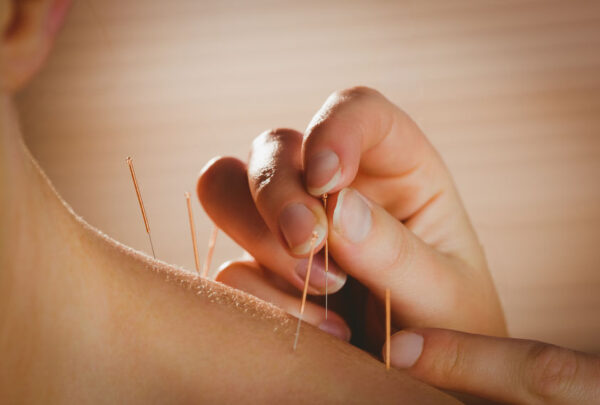

The Foundation of Acupuncture in Physiotherapy
Restoring Balance and Homeostasis
To achieve harmony within the body, multiple systems must be healthy and balanced. Acupuncture treatments focus on restoring the body to a state of homeostasis by targeting the source of imbalance using specific acupuncture points. A thorough understanding of your medical history enables the clinician to create a personalized treatment plan that addresses your unique needs.
Amplifying Natural Self-Repair Mechanisms
The human body possesses an innate ability to self-repair. Acupuncture, Acupressure, or Electro-Acupuncture work synergistically to enhance these natural mechanisms, speeding up recovery and improving repair timeframes. Additionally, acupuncture complements other physiotherapy modalities, such as exercise and conditioning, to maximize the healing process.
Understanding the Concept of Qi
The Flow of Qi
Central to acupuncture is the concept of Qi (pronounced ‘chee’), representing the vital energy that circulates through meridians or pathways within the body. These pathways connect the deeper tissues and organs with the more superficial layers, ensuring a balanced and healthy system. When the flow of Qi is disrupted due to injury, disease, emotional trauma, or infection, it can lead to stagnation, causing pain and inflammation.
Restoring Balance with Acupuncture
Acupuncture involves the insertion and stimulation of needles at specific acupuncture points to restore the free-flow of Qi. By doing so, imbalances are corrected, and the body’s natural healing processes are stimulated, reducing pain and inflammation. Acupuncture effectively acts as a key to unlock the body’s ability to heal itself.
Advanced Applications of Acupuncture in Physiotherapy
Qualified Practitioners and TCM
Members of the AACP with advanced qualifications are proficient in practicing traditional Chinese acupuncture (TCM). This specialized approach allows them to treat complex conditions with various underlying causes, broadening the scope of acupuncture’s therapeutic potential.
Different Approaches to Acupuncture
Conventional Acupuncture
Conventional acupuncture involves the use of single-use, pre-sterilized, disposable needles of varying widths, lengths, and materials. The physiotherapist strategically places these needles at acupuncture points, tailored to address the root cause of the imbalance. These needles are typically left in position for 20-30 minutes, stimulating the body’s healing responses.
Trigger Point Acupuncture
Trigger point acupuncture is effective for facilitating relaxation in specific muscles after trauma, such as whiplash injuries, and for addressing persistent muscle pain, like repetitive strain injury (RSI). By inserting a needle into the affected muscle and promoting relaxation, this technique helps alleviate tension and promotes recovery more quickly than conventional acupuncture.
Acupressure
Acupressure involves using the physiotherapist’s hands to apply pressure on acupuncture or trigger points, providing relief from muscle tightness and stimulating Qi flow to balance the body. This hands-on healing technique is particularly suitable for patients who are sensitive to needles, including those with needle phobia, children, and frail individuals.
Laser Acupuncture
Laser acupuncture utilizes low-level laser therapy (LLT) to stimulate acupuncture points instead of needles. This non-invasive approach is ideal for nervous patients, children, and sensitive areas like the ears. Physiotherapists trained in laser therapy can effectively apply this technique, considering its indications and contraindications.
Moxibustion and Cupping
Moxibustion and cupping are techniques that introduce warmth into acupuncture points or areas requiring increased Qi flow stimulation. These methods enhance circulation, reduce muscle spasm and pain, and prepare the tissues for stretching or joint mobilization. Conditions like osteoarthritis and areas with poor Qi flow benefit from these treatments.
Electro-Acupuncture
Electro-acupuncture involves coupling inserted needles to electrodes connected to an electro-acupuncture apparatus. This allows the delivery of electrical impulses with variable amplitudes and frequencies, contributing to pain reduction, relaxation, and improved sleep. It is particularly beneficial for chronic pain conditions and is supported by research as a valuable pain modulation method.
Acupuncture within physiotherapy represents a powerful and holistic approach to pain management, inflammation reduction, and enhanced recovery. Its incorporation of ancient wisdom and modern scientific understanding allows for personalized treatment plans, tailored to each individual’s needs. Whether through conventional acupuncture, trigger point acupuncture, acupressure, laser acupuncture, or other specialized techniques, this practice can significantly contribute to your overall well-being. Take the initiative to find a local acupuncture physiotherapist and experience the healing power of acupuncture for yourself.
The Evolution and Popularity of Qigong: From Ancient Origins to Modern Recognition
Introduction
Qigong, an ancient Chinese practice, traces its roots back to the mists of antiquity. Over thousands of years, it has evolved, adapting to various influences and cultural changes. From its humble beginnings as simple movements imitating nature’s rhythms, qigong has grown into a powerful healing exercise embraced by millions worldwide. In this article, we delve into the fascinating history of qigong, exploring its origins, development, and global recognition.
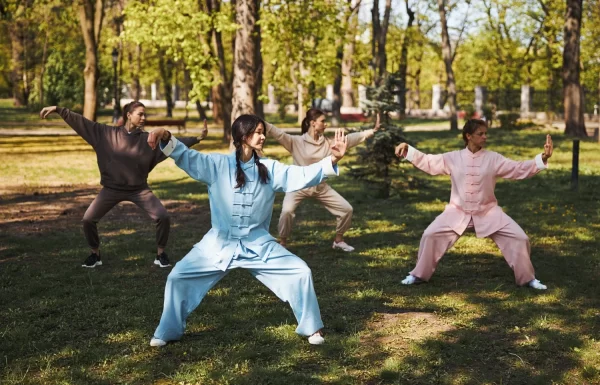

Ancient Origins: The Birth of Dao-yin
In ancient China, slow-paced farmers deeply connected to nature observed how life thrived in plants and animals. By imitating these natural principles through movements, the earliest form of qigong emerged. This practice was known as dao-yin, meaning “leading and guiding the energy.” Historical records suggest that dao-yin-like techniques were present over 5,000 years ago, but the term “qigong” gained widespread use only in the twentieth century.
The Yellow Emperor and the Roots of Chinese Medicine
Around 1122 B.C., The Book of Change (I Ching) introduced the concept of “qi” or vital energy. The study of the relationship between heaven, earth, and man marked an early milestone in qigong’s development. Lao Tzu, the founder of Taoism, also contributed to the understanding of qi, describing breathing techniques in his book Dao De Jing. These concepts laid the foundation for Chinese Medicine, incorporating yin, yang, and the five elements.
The Influence of Buddhism and Taoism
Between 200 B.C. and 500 A.D., Buddhism and yoga meditation practices from India were introduced to China and merged with Taoist internal alchemy. This integration brought a new era of qigong, emphasizing internal functioning. However, these teachings remained shrouded in secrecy and were passed down to select disciples. Notably, a Buddhist monk named Bodhidharma unified spiritual and martial aspects of qigong, promoting its physical and spiritual benefits.
The Diverse Lineages of Qigong
The secrecy surrounding qigong led to the development of numerous distinct styles, each practiced within specific families, villages, religious or martial arts groups. Some popular styles include Tai Chi, Animal Frolics, Eight Pieces of Brocade, Swimming Dragon, Microcosmic Orbit, and Six Syllable Secret. Qigong also played a vital role in traditional Chinese medicine, with renowned physicians being skilled qigong masters.
The Suppression and Revival of Qigong
During the Cultural Revolution, ancient practices like Taoism and Chinese Medicine were devalued as archaic, and anything linked to religion was deemed taboo. Qigong practitioners faced potential imprisonment and a standstill in its development. However, the authorities eventually recognized the importance of Chinese medicine, leading to the resurgence of qigong under its umbrella. This period also saw an influx of Western influences and technology into China.
Scientific Recognition and Global Expansion
In 1985, the China Qigong Science Association was established, giving qigong a scientific footing. Controlled studies showed positive benefits of the practice, and qigong gained popularity within China. By the 1990s, international conferences and publications on qigong research emerged. Its global recognition soared, with millions of practitioners worldwide.
Conclusion
The history of qigong is a captivating journey from ancient origins to modern recognition. Evolving from simple imitations of nature to a widely recognized healing exercise, qigong has become an integral part of traditional Chinese medicine and gained international popularity. Embracing the essence of qi, this ancient practice continues to offer numerous benefits for mind, body, and spirit, making it one of the most sought-after forms of healing exercise in the world today.
The Healing Power of Sound: Exploring the History and Benefits of Sound Healing Therapy
Introduction
Sound is a pervasive element in our lives, from the everyday noises surrounding us to the internal rhythms within our bodies. However, sound is much more than just background noise; it has the potential to promote healing and well-being. This article dives into the world of sound healing, an ancient practice that utilizes specific sound frequencies to enhance health and harmony. From its historical roots to its modern applications, sound healing therapy offers a fascinating journey into the realm of sound vibrations and their profound impact on our bodies and minds.
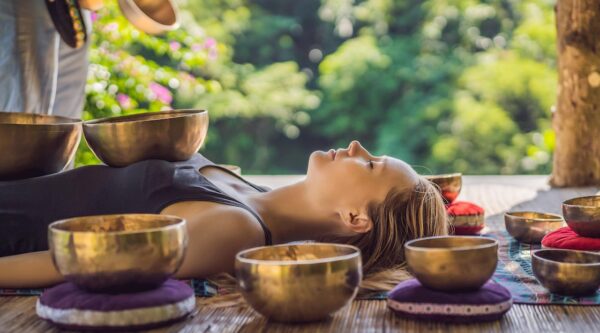

What Is Sound Healing Therapy?
Sound healing is a therapeutic practice that leverages sound frequencies to encourage overall well-being. This encompassing therapy can involve both the use of the human voice and listening to various sounds and voices. During sound healing sessions, practitioners transmit sounds to clients through techniques such as vocalization, music, or instrument play. The process is believed to promote a state of harmony and health, facilitating relaxation and healing.
The Historical Roots of Sound Healing
The origins of sound healing therapy can be traced back to ancient Tibetan and Himalayan cultures. Monks in Nepal and Tibet used Tibetan singing bowls, metal bowls employed in spiritual and healing ceremonies. These bowls, renowned for their ancient healing properties, have gained popularity in Western cultures due to their affirmed benefits through modern scientific studies. Although many of the bowls used today are modern replicas, they still produce vibrational sounds when tapped or rubbed with a wooden mallet.
In the mid-20th century, English osteopath Sir Peter Guy Manners pioneered sound healing as a scientific and medical practice in the Western world. His research focused on using audible voice frequency in various treatments, aiming to stimulate the body’s natural healing abilities. Manners explored the therapeutic effects of sound on chronic inflammation, arthritis, and bone calcification. In his groundbreaking research, he identified over 600 healing frequencies and correlated them with specific body parts.
Innovators in Sound Healing
In the late 20th century, French musician, acupuncturist, and composer Fabien Maman made significant contributions to the field of sound therapy. Drawing on his musical background, Maman linked music and sound to his new healing approach. He pioneered the use of tuning forks in sound therapy, which became a common instrument in the practice. These tuning forks can communicate vibrations to DNA cells, the body, and the magnetic field, enriching the potential for healing.
Another key figure in sound healing’s modern development is Simon Heather, an acupuncturist from the United Kingdom. In 1996, Heather founded the UK Sound Healers Association, dedicated to promoting sound healing in the UK. This association later contributed to the establishment of the College of Sound Healing in 2005. Heather’s teachings and theories about sound healing have since spread across the globe.
The Science behind Sound Healing Therapy
The effectiveness of sound healing lies in the understanding of how sound vibrations interact with organisms and objects. Sounds consist of vibrations that resonate with specific frequencies. When an object is struck and placed close to another, the vibrations can transfer and affect the second object. This principle applies to living organisms as well, impacting them at an atomic level.
The Impact of Sound on the Brain
The human brain responds to different sounds and properties of sound through various neural regions. Sound vibrations travel through the ear and are transformed into nerve impulses, interpreted by the auditory cortex. Different aspects of sound, such as pitch, melody, harmony, timbre, and rhythm, are processed in different regions of the brain.
Brainwave Patterns and Sound
The combination of sounds can organize neural activity, stimulating the brain and retuning emotions. Different brainwave patterns may change to match aspects of sound vibrations, influencing the individual’s state of mind. For example, sounds like Tibetan singing bowls, which promote calmness, have been associated with delta brainwaves, linked to deep relaxation.
The Healing Mechanisms of Sound
Although the exact healing mechanisms of sound are not fully understood, several hypotheses provide insights:
- Changing Brainwaves: Certain sounds can induce a shift in brainwaves, helping the brain transition from an agitated state (beta waves) to a more relaxed state (theta or delta waves).
- Binaural Beats: When tones at different hertz levels are played in each ear, the brain tends to synchronize to the difference between the two frequencies, potentially influencing relaxation and meditative states.
- The Body’s Biofield: Some researchers propose that sound vibrations interact with the biofield, an energy field surrounding the human body, leading to various healing effects.
Instruments Used in Sound Healing
A wide range of instruments is used in sound healing, each offering unique benefits. Tibetan singing bowls, despite being mostly modern reproductions, remain a popular choice. Other instruments include tuning forks, gongs, whistles, didgeridoos, flutes, frame drums, and rain sticks. The human voice is also a potent healing instrument, easily accessible to everyone.
The Potential Benefits of Sound Healing
Sound healing has been associated with various physical and mental benefits, such as increased relaxation, a more positive outlook, enhanced meditative states, reduced physical pain, heightened consciousness, reduced stress, decreased exhaustion, and increased energy levels.
The Effectiveness of Sound Healing
While further scientific research is needed to solidify sound healing as a mainstream therapeutic practice, some evidence supports its effectiveness. Studies have shown that certain sound practices, such as mantras and emotional intonations, can stimulate specific brain regions and brainwave patterns. Case studies have also demonstrated the positive effects of sound healing on individuals, leading to reduced pain, increased movement, and overall well-being.
Conclusion
Sound healing therapy, an ancient practice with modern applications, harnesses the power of sound vibrations to promote healing and relaxation. From its roots in Tibetan and Himalayan cultures to its pioneers and innovators in the Western world, sound healing has evolved into a widely recognized therapeutic approach. Although more scientific research is needed, the growing body of evidence highlights the potential benefits of sound healing on the mind and body. As this healing modality gains popularity, more individuals seek its non-invasive and safe techniques to enhance their overall health and well-being.
The Healing Power of Reflexology: A Comprehensive Guide
Introduction
In the world of alternative medicine, reflexology, also known as zone therapy, stands as a promising healing practice. This article explores the history, effectiveness, and claimed mechanisms of reflexology. Discover the potential benefits and limitations of this ancient technique that involves applying pressure to specific points on the feet, ears, and hands.
Understanding Reflexology: A Brief Overview
Reflexology, a practice steeped in tradition, involves the skilled application of thumb, finger, and hand massage techniques to the feet, ears, and hands. The fundamental principle behind reflexology revolves around the belief that these areas are interconnected with various organs and zones of the body, making them prime targets for therapeutic touch.
The History of Reflexology: Tracing its Roots
Looking back into history, we find traces of reflexology-like practices in ancient civilizations like India, China, and Egypt. However, it was in the early 20th century that reflexology gained prominence in the United States, thanks to the efforts of William H. Fitzgerald and Edwin F. Bowers. Fitzgerald, an ear, nose, and throat specialist, introduced the concept of pressure points having an anesthetic effect on other parts of the body. Eunice D. Ingham, a nurse and physiotherapist, further developed the technique by mapping the entire body onto the feet, coining the term “reflexology.”
Effectiveness of Reflexology: Unveiling the Evidence
While reflexology has been revered for its potential healing powers, the scientific community remains skeptical. Despite claims of relieving pain, stimulating energy, and releasing blockages, there is a lack of convincing scientific evidence supporting its effectiveness. A 2015 review by the Australian Government’s Department of Health revealed no clear evidence of reflexology’s efficacy for any medical condition.
Decoding the Mechanism: Theories Behind Reflexology
Reflexologists theorize that manipulating specific points on the feet, ears, and hands can trigger healing responses in corresponding areas of the body, promoting balance and well-being. Some practitioners suggest that reflexology can unblock the flow of an invisible life force known as “Qi,” allowing healing to take place. Others believe that pressure on the feet can release chemicals like endorphins, alleviating stress and pain. However, these theories lack solid scientific backing and have been challenged by medical professionals.
Regulation of Reflexology: A Matter of Standards
In the United Kingdom, reflexology is regulated on a voluntary basis by the Complementary and Natural Healthcare Council (CNHC). While this offers a sense of structure and accountability, it also allows anyone to practice as a reflexologist. The CNHC has faced challenges in the past when certain practitioners made claims about the efficacy of reflexology in treating illnesses, leading to retractions and conflicts with advertising standards.
Conclusion: The Quest for Healing
Reflexology continues to be a popular alternative therapy in various parts of the world, including Denmark and Norway. While many individuals have reported positive experiences with reflexology, the scientific community remains cautious about its claimed benefits. As a complementary therapy, it may offer relaxation and a sense of well-being, but for medical conditions, it is essential to seek evidence-based treatments. As research and understanding evolve, the true potential of reflexology may eventually be illuminated, shedding light on its role in the journey towards optimal health and healing.
Shamanism: Bridging Worlds and Healing Realms
Shamanism, often referred to as samanism, is a profound religious practice that involves a skilled practitioner, known as a shaman or saman, who interacts with the spirit world by entering altered states of consciousness, such as trance. The primary goal of shamanism is to channel spiritual energies and spirits into the physical world, commonly for purposes like healing, divination, and aiding individuals in various ways.


Exploring Shamanism: A Multidisciplinary Approach
The intriguing realm of shamanism has captivated scholars from diverse fields including anthropology, archaeology, history, religious studies, philosophy, and psychology. This widespread interest has led to the creation of numerous books, academic papers, and even a dedicated peer-reviewed journal focused on shamanism’s study.
The Evolution of Shamanism: Neoshamanism and Cultural Dynamics
In the 20th century, a noteworthy development known as neoshamanism emerged among non-Indigenous Western communities, particularly within countercultural movements like the hippies and the New Age movement. These modern magicoreligious practices were heavily influenced by interpretations of Indigenous religions, giving rise to what is now called the neoshamanic movement. This movement has significantly impacted neopagan practices but also faced criticism, backlash, and accusations of cultural appropriation, exploitation, and misrepresentation.
Decoding the Origins: Unveiling Shamanism’s Etymology
The term “shamanism” finds its roots in the Russian word “šamán,” which traces back to the Tungusic languages, potentially originating from the Evenki peoples. It’s often associated with the idea of “knowing.” However, some scholars, like Finnish ethnolinguist Juha Janhunen, challenge this etymological link. Moreover, there’s a fascinating connection between the term “shamanism” and the Sanskrit word “śramaṇa,” denoting a wandering holy figure in Central Asian languages.
Shamanism Unveiled: Definitions and Interpretations
An exact definition of shamanism remains elusive among anthropologists, with various perspectives on its core elements. Nevertheless, common themes emerge, including the alteration of consciousness, the importance of this practice to the community, and the controlled dissemination of knowledge about it. Differing viewpoints range from broad interpretations encompassing anyone contacting the spirit world in an altered state, to more specific distinctions between shamans and other spiritual practitioners.
Shamanism’s Many Faces: A Critical Analysis
The term “shamanism” has attracted critique from several angles. Alice Kehoe, an anthropologist, highlights issues of cultural appropriation, particularly within New Age and Western versions of shamanism, which she believes misrepresent or dilute Indigenous practices. Furthermore, Kehoe argues against viewing shamanism as an unchanging ancient religion, and she challenges the idea of ritualistic practices as exclusive to shamanism.
Shamanism Across Cultures: A Complex Tapestry
The term “shamanism” has come under scrutiny for its potential colonial roots and the oversimplification of diverse cultural practices. It is often used broadly to categorize various beliefs and practices worldwide. However, Indigenous cultures emphasize that their spiritual practices are unique and defy the homogenizing label of “shamanism.” This term’s implications have sparked important discussions about cultural understanding and representation.
Shamanism: The Bridge Between Worlds
At its core, shamanism is characterized by its role as a bridge between the human and spirit realms. Shamans act as intermediaries, facilitating healing, communication with spirits, and guiding lost souls. Through rituals, often involving drumming, chanting, and altered states of consciousness, shamans mend the soul and restore balance to the physical body. The interconnectedness of the spiritual and physical worlds forms the foundation of shamanic practices.
Charting New Territories: Rethinking Shamanism
As scholars reevaluate the term “shamanism,” alternative suggestions, such as “shamanhood” or “shamanship,” arise to capture the unique features and diversity of shamanic cultures. These terms emphasize the practical and everyday aspects of shamanic practices, contrasting with the connotations of an “-ism.” This paradigm shift reflects a deeper understanding of the intricate tapestry of beliefs and practices that constitute shamanism.
Shamanism Through Time: A Historical Journey
Shamanism’s historical roots extend back to indigenous and tribal societies, where shamans held the power to heal, communicate with spirits, and guide souls to the afterlife. Despite challenges imposed by colonialism and imperialism, many communities are experiencing a resurgence of traditional spiritual practices, reclaiming their heritage and preserving their dynamic traditions. The unique cultural expressions and enduring vitality of shamanism continue to captivate and inspire scholars and seekers alike.
Core Beliefs of Shamanism: A Bridge to the Spirit Realm
Shamanism, across its diverse variations worldwide, shares fundamental beliefs that form the bedrock of its practice. These common tenets, as elucidated by Eliade (1972)[26], provide insights into the spiritual world and the shaman’s role as an intermediary.
The Spirit Realm: An Integral Presence
Central to shamanic belief is the existence of spirits, whose influence extends into both individual lives and the broader human society. These spirits, both benevolent and malevolent, play pivotal roles in shaping the destinies of individuals and communities alike.
Shamanic Communication: Bridging Worlds
A shaman’s unique ability lies in their capacity to communicate with the spirit realm. This connection enables them to unravel the mysteries of the unseen, offering guidance, insight, and healing to those seeking their assistance.
Healing and Banishing Malevolent Spirits
Shamans, armed with their knowledge and connection to the spiritual domain, possess the power to heal ailments inflicted by malevolent spirits. Through their expertise, they confront spiritual afflictions and banish infectious spirits, restoring physical and spiritual harmony.
Ecstasy and Vision Quests: Embarking on Spiritual Journeys
Shamans utilize trance-inducing techniques to achieve visionary ecstasy, embarking on profound journeys into the spirit realm. These altered states of consciousness facilitate encounters with spirit guides, omens, and message-bearers, enabling shamans to glean wisdom and insight from the supernatural.
Beyond the Physical: Spirit Journeys and Animal Guides
Shamans possess the remarkable ability to transcend the physical realm, allowing their spirits to journey into the supernatural world. In pursuit of answers and enlightenment, the shaman’s spirit ventures forth, guided by animal images that serve as spirit guides, omens, and messengers.
Divination and Insight: Unveiling the Future
The shaman’s repertoire extends beyond healing, encompassing diverse forms of divination. Through practices such as scrying, bone or rune casting, and prophetic foresight, shamans unveil glimpses of the future, aiding their communities in navigating the unknown.
Shamanism in Cultural Context: A Complex Web
Eliade’s conceptualization of shamans as universal figures inadvertently creates a generalized image of Indigenous cultures. This portrayal perpetuates notions of the “dead Indian” or the “noble savage,” distorting the rich tapestry of diverse traditions.
Soul and Healing: A Profound Interconnection
The concept of the soul assumes a central role in shamanism, underpinning various practices:
- Healing: Shamanic healing often hinges on restoring the lost soul of an afflicted individual, rectifying imbalances and restoring well-being.
- Game Scarcity: Shamans release the souls of hunted game to alleviate scarcity, ensuring harmony between humans and animal spirits.
- Fertility: Infertility is believed to be alleviated by obtaining the soul of an anticipated child, reinforcing the interplay between soul and life.
Spiritual Entities: Unseen Forces in Shamanism
Spirits constitute the essence of the shamanic realm, invisible to all but the shaman. These entities, capable of assuming human or animal forms, hold diverse attributes and significance. For instance, storytelling and musical talents may be seen as gifts bestowed by spirit contact.
Shamanic Practices: Navigating the Spirit Realm
Shamans embark on transformative journeys through various methods, often in combination:
- Music and Songs: Akin to shamanism’s diversity, music and songs vary across cultures, imitating natural sounds and facilitating communication with spirits.
- Initiation and Learning: Shamanic training is multifaceted, shaped by dreams, signs, or inheritance. The process often involves an initiatory crisis, a transformative ordeal leading to shamanic realization.
- The Wounded Healer: The archetype of the wounded healer reflects a shamanic journey, where sickness and trials forge a deeper understanding of healing and spiritual insight.
Embracing the Supernatural: Additional Practices
Shamanic practice encompasses an array of rituals and techniques:
- Ecstatic Dancing: Movement and rhythm induce trance states, fostering spiritual communion.
- Vigils: Shamans engage in heightened awareness through extended periods of wakefulness.
- Fasting: Abstaining from food heightens sensitivity and attunes the shaman to the spirit realm.
In this intricate tapestry of beliefs and practices, shamanism stands as a timeless bridge between worlds, offering solace, insight, and healing through its deep connection to the unseen forces that shape our reality.
In conclusion, shamanism stands as a profound religious practice that transcends cultural boundaries, serving as a conduit between the material and spiritual realms. Its diverse interpretations, historical evolution, and contemporary challenges enrich our understanding of this multifaceted phenomenon that continues to intrigue and inspire the human spirit.
Crystal Healing: Unveiling the Pseudoscience Behind Semiprecious Stones
Unlocking the Mysteries of Crystal Healing and its Historical Context
Crystal healing, often hailed as an alternative medicine practice, revolves around the use of semiprecious stones and crystals such as quartz, agate, amethyst, or opal. These crystals are purported to possess healing powers, an assertion, however, lacking a scientific foundation. Advocates of crystal healing claim that these gems can elevate energy levels, ward off negative energy, release blocked energy, and even transform one’s aura. Despite these claims, scientific research has yet to substantiate the existence of such healing energies or the efficacy of crystal healing beyond a placebo effect.
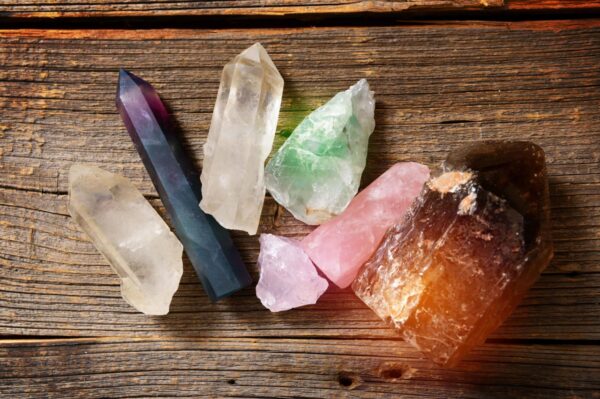

Placing Crystals: Chakras and Energy Grids
One approach in crystal healing involves the strategic placement of crystals on various parts of the body, often aligned with chakras. Alternatively, practitioners arrange crystals around the body, crafting an “energy grid” with the intention of enveloping the individual in healing energies. Nonetheless, scientific investigations have failed to uncover evidence supporting the existence of these alleged “energy grids.” The effects of crystal healing on the body appear to be on par with the placebo effect, lacking demonstrable superiority.
Unraveling the Origins: Ancient Beliefs and Practices
The history of crystal healing dates back to ancient civilizations, where crystals held diverse significance and were intertwined with cultural practices.
Atlantean Influence and Sumerian Beginnings
Even Plato’s account of Atlantis alludes to the use of crystals for mind-reading and thought transmission. The Sumerians, around 4500 to 2000 BC, marked the earliest historical documentation of crystal utilization. These ancient people integrated crystals into their magical rituals, harnessing their mystical properties.
Egyptian Connections: From Jewelry to Afterlife Protection
The ancient Egyptians mined crystals for jewelry-making and attributed metaphysical properties to these gemstones. Crystals like lapis lazuli were buried with the deceased, symbolizing protection in the afterlife. Amulets, carefully selected for their properties, were worn or placed on the body, serving as conduits for specific powers and ensuring well-being in the afterlife. Headrest amulets represented resurrection and rebirth, embodying the journey beyond mortality.
Greek Insights and Medicinal Beliefs
In ancient Greece, crystals were ascribed a multitude of properties. The Greek term “krýstallos,” meaning “ice,” gave birth to the modern word “crystal.” Clear quartz was believed to be frozen water, and amethyst was worn to prevent intoxication. These notions illustrate the diverse roles that crystals played in ancient cultures.
Medieval Perceptions and Lapidary Medicine
Throughout history, various cultures have believed in the healing potential of crystals, often referred to as lapidary medicine. Both Pliny the Elder and Galen asserted that certain crystals possessed medicinal properties. This belief persisted through the Middle Ages in Europe, with crystal amulets and their powers chronicled in texts known as lapidaries. These texts remained influential until the 17th century.
Modern Symbolism and Emotional Healing
In the contemporary context, different cultures attribute distinct symbolism and healing properties to various crystals. Take, for instance, rose quartz. From preventing aging in ancient Egypt to signifying ownership in Roman times, rose quartz has evolved into the “love stone,” promoting emotional balance and healing in the present day.
The Verdict on Crystal Healing: A Placebo in Disguise
Despite the intriguing historical and cultural contexts surrounding crystal healing, modern scientific inquiry reveals a lack of empirical evidence to substantiate its claims. While crystals undeniably hold aesthetic and symbolic value, their supposed healing powers remain rooted in pseudoscience. As we navigate the complexities of alternative medicine, it’s essential to approach crystal healing with a critical eye, recognizing its potential as a placebo rather than a scientifically proven remedy.
Exploring Contemporary Trends in Crystal Healing
Unveiling New Age Perspectives and the Multibillion-Dollar Industry
In the realm of alternative medicine, crystal healing has carved a distinct niche, particularly within the New Age spiritual movement. Often dubbed as “the middle-class New Age healing activity par excellence,” crystal healing holds a unique place in the landscape of complementary and alternative medicine (CAM). Unlike other CAM practices, crystal healing thrives on extreme personalization and creative expression, shaping its identity as an individuated form of healing.
The Art of Personalized Healing: Properties and Ailments
Practitioners of crystal healing attribute certain physical properties—shape, color, and markings—to determine the ailments a specific stone can address. Published lists of these associations find their way into commonly distributed texts, serving as reference guides for enthusiasts. Paradoxically, these practitioners also hold the belief that crystals lack intrinsic qualities, asserting instead that their attributes morph according to the participants’ needs. The selection of stones, guided by color and metaphysical qualities, culminates in their placement on different parts of the body, influenced by grounding principles, chakras, and energy grids.
Economic Enchantment: The Booming Crystal Industry
On a global scale, the retail sales of crystals surpassed a staggering US$1 billion mark in 2019, a testament to the widespread fascination with these enchanting gems. India, China, Brazil, and Madagascar stand as the primary producers of crystals, with the latter often mined in perilous conditions, involving families toiling together in makeshift mines. Despite the immense market value, the miners’ income remains dismally low, a mere fraction of the final retail price. Discrepancies in wages have been attributed to both consumer demand for affordable prices and the profit motives of developed-country shops.
The Scientific Verdict: Pseudoscience and Placebo Effect
Amid the fervor surrounding crystal healing, peer-reviewed scientific evidence supporting its efficacy remains conspicuously absent. Regarded as a pseudoscience, crystal healing’s alleged successes are frequently attributed to the placebo effect. Furthermore, foundational concepts such as chakras, energy grids, and the notion of being “blocked” lack scientific substantiation and are widely acknowledged as terms employed to lend an air of credibility to the practice. The scientific understanding of energy, a precisely defined concept, diverges significantly from the esoteric interpretations favored by crystal healing proponents.
Unveiling the Truth: Crystal Healing under Scrutiny
In a seminal study conducted in 1999 by researchers French and Williams, the potential of crystals was examined alongside a placebo. Volunteers were tasked with meditating using either a genuine quartz crystal or an indistinguishable placebo stone. Intriguingly, many participants reported experiencing typical “crystal effects,” irrespective of whether the crystal was authentic or placebo. A subsequent study in 2001, led by Christopher French of the University of London, echoed these findings, concluding that crystal healing demonstrated no discernible benefits beyond a placebo effect.
Beyond Boundaries: Crystal Healing and Veterinary Practices
While crystal healing predominantly caters to humans, its techniques have also ventured into the realm of animal care. However, veterinary organizations like the British Veterinary Association caution against the unproven nature of these practices. Seeking guidance from a qualified veterinarian is encouraged before delving into alternative techniques for animal well-being.
Confronting Misinformation: Shungite and 5G Radiation
Notably, crystal healing has intersected with misinformation, as some proponents, along with 5G conspiracy theorists, erroneously claim that shungite possesses the ability to absorb 5G radiation. This pseudoscientific assertion remains unsupported by credible evidence and serves as a cautionary tale of how misinformation can intertwine with alternative healing practices.
In conclusion, crystal healing occupies a captivating and controversial space within the realm of alternative medicine. As its popularity continues to grow and evolve, it is paramount to critically evaluate its claims in the light of scientific scrutiny. While the allure of personalized healing and the mystique of crystals remain, a rational approach demands evidence-based exploration and an unwavering commitment to understanding the intricacies of holistic well-being.
Are There Risks to Energy Healing?
Energy healing is generally considered safe and noninvasive. However, some individuals may experience uncomfortable sensations during or after a session, such as tingling, emotional release, hot or cold sensations, muscle twitches, coughing, or tiredness. These reactions are often temporary and part of the body’s natural response to energy shifts.
Unveiling the Mechanisms of Energy Healing
The scientific community has not yet reached a consensus on the exact mechanisms behind energy healing therapies. Advocates believe that these techniques clear blockages in the energy field, leading to balance and healing. Kristen Blythe, a reiki master teacher with extensive training in various energy healing modalities, explains that imbalances in the energy field can contribute to emotional challenges, physical pain, limiting life patterns, and other undesired conditions.
Exploring the History of Energy Healing
Energy healing has ancient roots in traditional forms of medicine, such as traditional Chinese medicine (TCM) and ayurveda. TCM views the body as having vital energy or qi that flows throughout. When this energy is imbalanced, it may lead to disease and illness. Similarly, ayurveda, originating in India over 3,000 years ago, is based on the concept of “prana” or vital energy.
Both TCM and ayurveda seek to support the body in achieving balance and healing through various tools like acupuncture, massage therapy, yoga, and tai chi.
Finding an Energy Healing Practitioner
As energy healing lacks a centralized regulating body, finding a trustworthy practitioner can be challenging. To ensure you work with a skilled professional, consider the following tips:
- Inquire about certification courses and training in the methods offered by the practitioner.
- Evaluate the practitioner’s experience, as more years of practice often indicate greater expertise.
- Seek recommendations from friends, acquaintances, or an integrative doctor to find a reliable practitioner.
Conclusion
Energy healing is a captivating field that draws from ancient wisdom and traditions to promote healing and balance. While its benefits have been praised by many, scientific research is ongoing to understand its mechanisms fully. If you’re interested in exploring energy healing, remember to seek out a reputable practitioner and approach the experience with an open mind. Whether you’re seeking pain relief, emotional well-being, or overall harmony, energy healing may offer a path to explore on your journey to better health.


